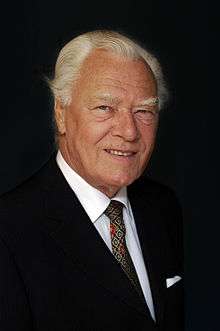Danish general election, 1990
Danish general election, 1990

|
|
|
|
|
|
|
General elections were held in Denmark on 12 December 1990.[1] Although the election resulted in a strong gain for the Social Democratic Party, Poul Schlüter's coalition government was able to continue despite the Danish Social Liberal Party leaving. Schlüter's coalition consisted of the Conservative People's Party and Venstre. Voter turnout was 82.8% in Denmark proper, 54.4% in the Faroe Islands and 50.8% in Greenland.[2]
Results
| Denmark |
|---|
| Party |
Votes |
% |
Seats |
+/– |
| Social Democratic Party | 1,211,121 | 37.4 | 69 | +14 |
| Conservative People's Party | 517,293 | 16.0 | 30 | –5 |
| Venstre | 511,643 | 15.8 | 29 | +7 |
| Socialist People's Party | 268,759 | 8.3 | 15 | –9 |
| Progress Party | 208,484 | 6.4 | 12 | –4 |
| Centre Democrats | 165,556 | 5.1 | 9 | 0 |
| Danish Social Liberal Party | 114,888 | 3.5 | 7 | –3 |
| Christian People's Party | 74,174 | 2.3 | 4 | 0 |
| Common Course | 57,896 | 1.8 | 0 | 0 |
| Red-Green Alliance | 54,038 | 1.7 | 0 | New |
| De Grønne | 27,642 | 0.9 | 0 | 0 |
| Justice Party of Denmark | 17,181 | 0.5 | 0 | New |
| Humanist Party | 763 | 0.0 | 0 | New |
| Independents | 10,224 | 0.3 | 0 | 0 |
| Invalid/blank votes | 25,758 | – | – | – |
| Total | 3,265,420 | 100 | 175 | 0 |
| Faroe Islands |
| Social Democratic Party | 4,835 | 27.0 | 1 | +1 |
| People's Party | 4,582 | 25.6 | 1 | 0 |
| Union Party | 4,558 | 25.5 | 0 | –1 |
| Republican Party | 2,377 | 13.3 | 0 | 0 |
| Self-Government Party | 1,240 | 6.9 | 0 | 0 |
| Christian People's Party | 285 | 1.6 | 0 | 0 |
| Invalid/blank votes | 79 | – | – | – |
| Total | 17,956 | 100 | 2 | 0 |
| Greenland |
| Forward | 8,272 | 42.8 | 1 | 0 |
| Feeling of Community | 7,078 | 36.6 | 1 | 0 |
| Inuit Ataqatigiit | 3,281 | 17.0 | 0 | 0 |
| Polar Party | 366 | 1.9 | 0 | 0 |
| Independents | 333 | 1.7 | 0 | New |
| Invalid/blank votes | 741 | – | – | – |
| Total | 20,080 | 100 | 2 | 0 |
| Source: Nohlen & Stöver |
| Popular vote |
|---|
|
|
|
|
|
| A |
|
37.38% |
| C |
|
15.97% |
| V |
|
15.79% |
| F |
|
8.30% |
| Z |
|
6.44% |
| D |
|
5.11% |
| B |
|
3.55% |
| Q |
|
2.29% |
| P |
|
1.79% |
| Ø |
|
1.67% |
| G |
|
0.85% |
| E |
|
0.53% |
| Others |
|
0.34% |
References
- ↑ Nohlen, D & Stöver, P (2010) Elections in Europe: A data handbook, p525 ISBN 978-3-8329-5609-7
- ↑ Nohlen & Stöver, p548

